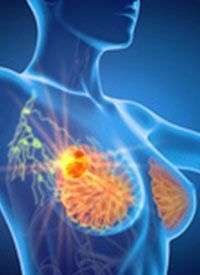Article
NCCN Adds MammaPrint Gene Expression Assay to Breast Cancer Guidelines
Author(s):
The National Comprehensive Cancer Network breast cancer guidelines issued February 7, 2003, added the MammaPrint UltraLow Risk gene expression assay to its list of recommended assays for consideration of adjuvant systemic therapy.

The National Comprehensive Cancer Network (NCCN) breast cancer guidelines issued February 7, 2003, added the MammaPrint UltraLow Risk gene expression assay to its list of recommended assays for consideration of adjuvant systemic therapy.1
MammaPrint is a 70-gene prognostic test that, along with other clinicopathologic factors, determines a specific patient’s breast cancer recurrence risk. Agendia, the assay’s manufacturer, said the recommendation is particularly critical for women with early-stage breast cancer who receive an UltraLow Risk test result and “can safely forgo toxic treatments yet maintain excellent chance of survival.”2
MammaPrint is recommended for patients with pN0 and pN1 disease with 1 to 3 positive nodes. Also recommended for this population are the 50-gene Prosigna and 12-gene EndoPredict, and 21-gene Onctotype Dx assays.1 Onctotype Dx is preferred for patients with pN0 disease. MammaPrint and Onctype Dx are both have 1 support, meaning that the recommendation is “based on high-level evidence and there is uniform NCCN consensus that the intervention is appropriate.”
“The MammaPrint UltraLow Risk data are now recognized by NCCN Guidelines, supporting the value of MammaPrint testing to identify these women with an UltraLow Risk of distant metastasis,” William Audeh, MD, chief medical officer of Agendia, said in a news release.2 “The clinical implications of an UltraLow Risk result are significant, allowing women and their clinicians to consider reducing endocrine therapy in the face of toxicity, for postmenopausal women, as well as avoiding unnecessary chemotherapy, for premenopausal women, while still experiencing excellent outcomes, free of breast cancer.”
Audeh added that NCCN’s recognition of the ultralow-risk category will enable clinicians to identify tumors that have an exceedingly low risk of distant metastasis, helping them to determine the optimal therapy while minimizing unnecessary treatment.
In the randomized phase 3 MINDACT trial (NCT00433589), investigators assessed genomic risk in 6693 patients aged 18 to 70 years with histologically proven operable invasive breast cancer (T1-3N0-1M0) using the MammaPrint assay.3 Tumors were classified into 70-gene signature risk categories based on an index score ranging from –1 to 1; an index score equal to or less than 0 is classified as high risk and an index score greater than 0 is classified as low risk.
At a median follow-up of 8.7 years, the breast cancer-specific survival was 99.6% (95% CI, 99.1%-100%) for women with ultralow risk (n = 1000) as identified by MammaPrint. The 8-year distant metastasis–free interval was 97.0% (95% CI, 95.8%-98.1%). Investigators concluded that these patients could be candidates for further de-escalation of treatment, to avoid overtreatment and the risk of adverse effects.
The NCCN also cited a secondary analysis of a randomized clinical trial of tamoxifen vs no systemic therapy in node-negative postmenopausal women published in 2017. With a follow-up of more than 20 years, patients identified by MammaPrint as ultralow risk had a disease
At 15 years, there were no deaths in patients with ultralow-risk disease who received 2 to 5 years of tamoxifen treatment. These patients had a 20-year disease-specific survival (DSS) rate of 97%. The DSS for untreated patients was 94% at 20 years.4
References
- NCCN Clinical Practice Guidelines in Oncology Guidelines: Breast cancer. February 7, 2023. Accessed February 14, 2023. http://www.nccn.org
- Updated NCCN Guidelines recognize MammaPrint UltraLow Risk result, highlighting its clinical utility for women with early-stage breast cancer who can safely forgo toxic treatments with excellent survival rates. Agendia. News release. February 13, 2023. Accessed February 14, 2023. http://agendia.com
- Lopes Cardozo JMN, Drukker CA, Rutgers EJT, et al. Outcome of patients with an ultralow-risk 70-gene signature in the MINDACT trial. J Clin Oncol. 2022;40(12):1335-1345. doi:10.1200/JCO.21.02019
- Esserman LJ, Yau C, Thompson CK, van 't Veer LJ, et al. Use of molecular tools to identify patients with indolent breast cancers with ultralow risk over 2 decades. JAMA Oncol. 2017;3(11):1503-1510. doi:10.1001/jamaoncol.2017.1261









